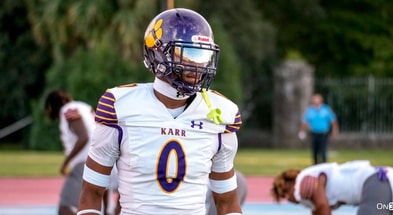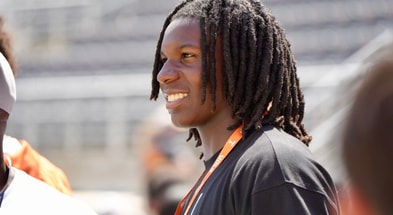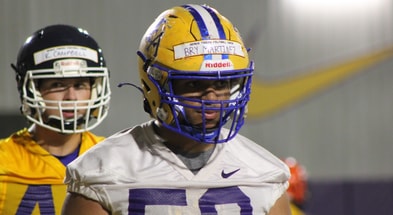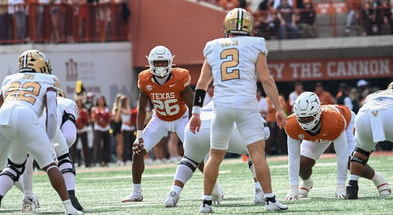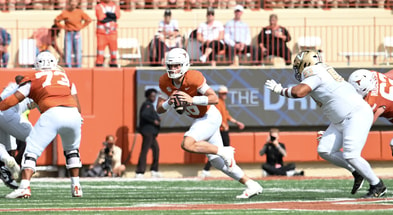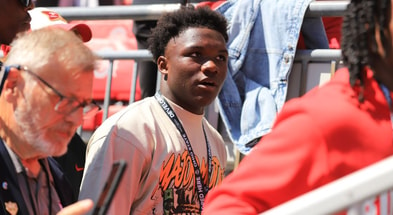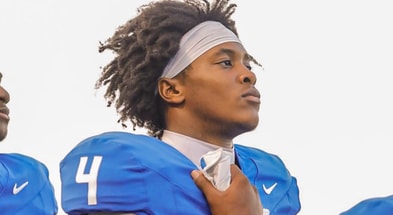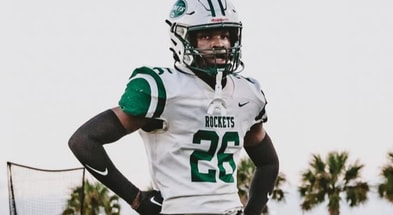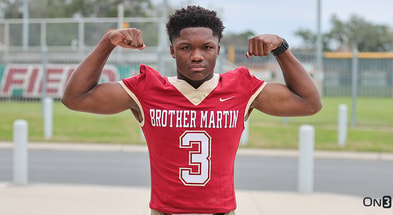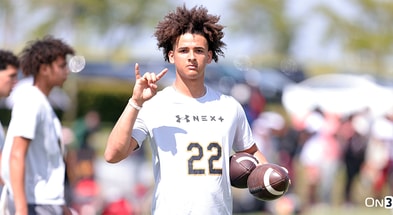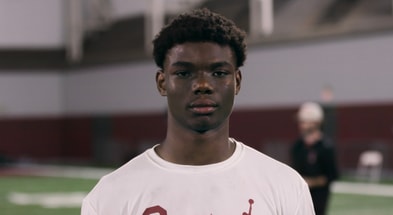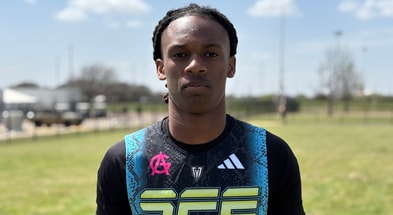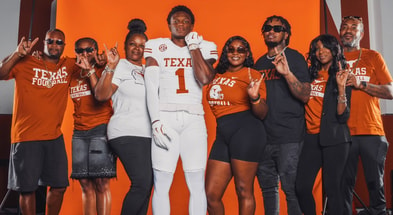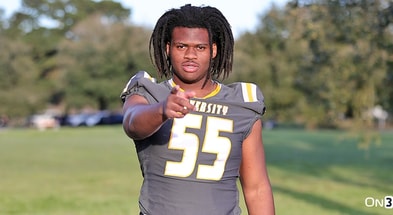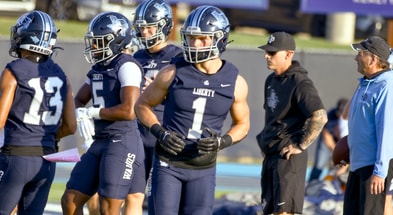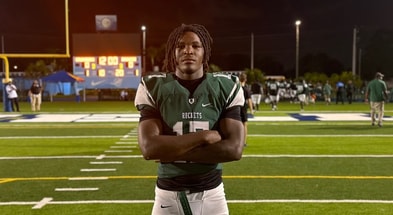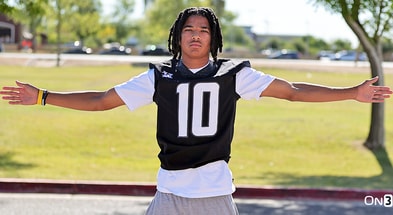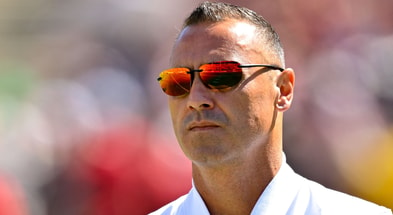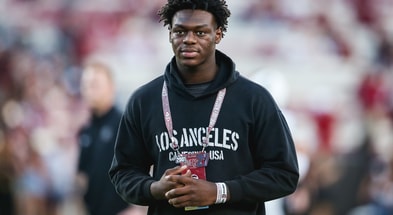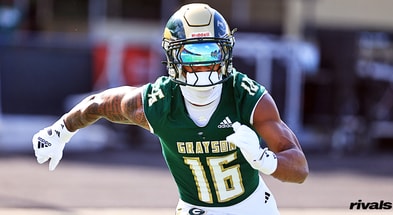Steve Sarkisian at SEC Media Days: How Texas Football Develops Stars On and Off the Field
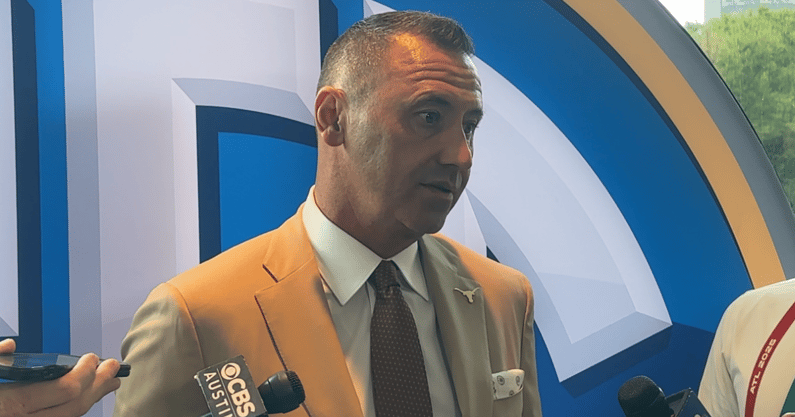
What Steve Sarkisian is building at Texas isn’t just a roster—it’s a system. A blueprint. One that merges early playing time, elite player development, real NIL opportunity, and life-after-football preparation into one of the most competitive environments in college football.
[Sign up for Inside Texas TODAY and get the BEST Longhorns scoop!]
If you’re ready to lead, compete, and do the work, Texas offers the full path to success.
At SEC Media Days, Sarkisian made it clear—this is the most talented, deepest, and most complete defense he’s had at Texas. He named players like Anthony Hill, Colin Simmons, Malik Muhammad, Jelani McDonald, Jaylon Guilbeau, Ethan Burke, Derek Williams, and Michael Taaffe—all of whom embraced the culture, earned meaningful snaps early, and developed into multi-year starters.
Guilbeau, for example, started as a true freshman against Alabama in one of the most anticipated home games in recent Texas history. Hill and Simmons burst onto the scene as freshman phenoms. Muhammad, McDonald, and Burke carved out roles through work ethic and versatility. Williams was on pace for a breakout season before his injury. And Taaffe, once a walk-on, is now a veteran presence and leader of the secondary.
On offense, DeAndre Moore quietly became a key contributor as a redshirt freshman. He earned starts and now leads the wide receiver room heading into 2025. Ryan Wingo, a true freshman, played meaningful snaps and started multiple games—further proof that if you’re ready at Texas, you’ll get your shot.
Sarkisian also pointed to the buy-in from transfers. Trey Moore adapted fast last season and became a high-impact defender. This year’s group—Brad Spence, Maraad Watson, Travis Shaw, and Cole Brevard—have already earned praise for their work ethic and how quickly they’ve embraced the Texas way.
At Texas, NIL is a resource—not a distraction. Players are compensated, but what separates this program is everything that comes with it: on-field development, business mentorship, academic support, and real-world connections that extend well beyond football. If you come in, do things the right way, and plug into the system, Texas sets you up for the next forty years—not just four.
Top 10
- 1Breaking
CFP Top 25 revealed
The official rankings are in
- 2New
CFP Bracket
Official first 12-team field
- 3Hot
Strength of Schedule
CFP Top 25 Weakest to strongest
- 4Trending
LSU return?
New AD on Nick Saban
- 5
Auburn Coaching Search
Latest names to know & more
Get the Daily On3 Newsletter in your inbox every morning
By clicking "Subscribe to Newsletter", I agree to On3's Privacy Notice, Terms, and use of my personal information described therein.
And you’re being pushed daily. Texas continues to stack elite recruiting classes. The guy behind you is just as good. That competition builds sharper, stronger, and more NFL-ready players. When you perform at a national title contender, the league takes notice.
Ask the players. Ask their families. Ask recruits like Tyler Atkinson, who heard directly from Anthony Hill during his official visit:
“I showed Tyler Atkinson around—not just football stuff, because I can talk football all day—but I showed him off-the-field things. What Texas can do for you on and off the field. I connected him with Derrick Johnson, who I train with. I showed him all the opportunities and resources that Texas has just living in the city of Austin and around this school. It’s limitless.”
Every single recruit who’s taken an official visit to Texas has echoed the same thing—the culture is different. They talk about how future teammates already feel like brothers, how the staff treats them like family, and how real the off-field opportunities are. These are still teenagers, but they’re seeing the bigger picture. And so are their families. That’s what makes Texas different.
This is the Texas football blueprint:
Play early.
Get developed.
Earn NIL.
Get drafted.
Build for life after football.
If you want it all—and you’re willing to earn it—Texas is the place.
